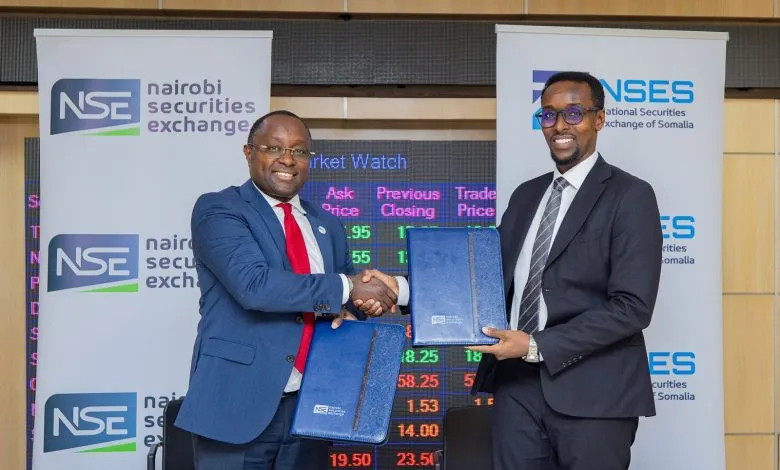In a decisive move aimed at reinforcing the country’s ongoing economic recovery, Sri Lanka’s central bank kept its key overnight policy rate unchanged at 8% for the second consecutive meeting on Wednesday. This decision, aligned with the views of a majority of economists polled by Reuters, comes at a time when the South Asian nation is steadily emerging from the depths of its worst financial crisis in decades. The central bank’s cautious stance is designed to anchor inflation expectations and sustain the momentum of a recovery that has been bolstered by robust GDP growth and declining consumer price pressures.
A Measured Approach to Monetary Policy
The policy rate, introduced in November of the previous year, was held steady at 8%, a decision that reflects the central bank’s confidence in its current monetary stance. In its official statement, the bank underscored that the prevailing policy framework is expected to guide inflation towards the target rate of 5% while simultaneously supporting domestic economic expansion. This outlook comes on the heels of a remarkable turnaround in macroeconomic performance, with Sri Lanka posting a better-than-expected 5% gross domestic product (GDP) growth in 2024—a stark contrast to the deep recession experienced three years ago.
Central bank officials emphasized that maintaining a stable policy rate was essential in this transitional phase. They noted that while the country is witnessing significant improvements, the global economic environment remains unpredictable. In particular, potential headwinds such as fluctuations in global commodity prices and a slowdown in international trade could affect domestic price dynamics. By holding the policy rate, the central bank aims to provide a predictable monetary environment that supports both businesses and consumers during this delicate period of adjustment.
Economic Recovery: From Crisis to Growth
Sri Lanka’s economic journey over the past few years has been nothing short of dramatic. The country endured an acute financial meltdown in 2022, marked by a precipitous drop in dollar reserves and record inflation that eroded consumer purchasing power and destabilized economic activity. However, decisive policy interventions, fiscal consolidation, and structural reforms have helped steer the nation back towards stability.
In 2024, the economy grew by 5%, signaling a turning point and a successful recovery trajectory. This growth has been driven by a combination of factors, including increased public investment, revitalized export sectors, and renewed consumer confidence. Additionally, key government reforms have improved the business climate and attracted international capital, further contributing to economic resurgence.
The International Monetary Fund (IMF) has also recognized the strength of Sri Lanka’s recovery efforts. Earlier this month, the IMF lauded the country’s progress, describing the economic turnaround as “remarkable.” The institution approved a fourth tranche of $334 million under a broader $2.9 billion programme, providing much-needed external support to sustain the recovery and boost investor confidence.
The Role of Inflation Dynamics
One of the critical challenges facing Sri Lanka in recent years has been soaring inflation, which peaked during the economic crisis. In February 2025, however, the nation’s consumer price index (CPI) contracted by 4.2% year-on-year. This significant reduction was largely driven by a 20% cut in household power tariffs implemented at the beginning of the year—a policy move that has helped ease the cost of living for many Sri Lankans.
Looking ahead, the central bank is optimistic that inflation will enter positive territory by mid-2025 and gradually converge towards its 5% target. Udeeshan Jonas, strategy head at Colombo-based equity research firm CAL, noted that if inflation were to fall below the target by mid-year, there is a distinct possibility that the central bank would consider cutting rates further. “Given the possibility of global commodity prices remaining low and concerns about a global trade slowdown, there is a likelihood that inflation can trend lower than the target,” Jonas said.
This potential for a rate cut, if inflation trends downward, underscores the flexibility of Sri Lanka’s monetary policy framework. The central bank remains vigilant and ready to adjust its stance as necessary to sustain economic growth and maintain price stability. Such a strategy is particularly critical in an era marked by global uncertainty, where external shocks can rapidly alter domestic economic conditions.
Balancing Growth and Stability in a Global Context
Sri Lanka’s decision to hold the policy rate at 8% must be viewed within the broader global economic context. The international landscape continues to be shaped by several key trends that have significant implications for emerging markets like Sri Lanka. These include persistent supply chain disruptions, geopolitical tensions, and evolving trade dynamics amid a potential global economic slowdown.
Global Commodity Prices:
While commodity prices have remained relatively subdued recently, their inherent volatility remains a risk factor. Low global prices can help keep domestic inflation in check by reducing input costs for industries such as manufacturing and agriculture. However, any sudden uptick in prices—perhaps driven by geopolitical instability or supply constraints—could quickly reverse this trend. The central bank’s cautious approach aims to mitigate such risks by ensuring that the domestic economy remains resilient in the face of external shocks.
Trade Slowdown Concerns:
The possibility of a global trade slowdown is another factor influencing the central bank’s decision-making process. With many of Sri Lanka’s key trading partners experiencing slower growth, the country could face challenges in its export sector. This would have a direct impact on foreign exchange earnings and overall economic performance. By maintaining a steady policy rate, the central bank seeks to provide a stable monetary environment that supports export competitiveness and encourages domestic investment, even as global trade dynamics evolve.
Supply Chain Challenges:
Recent years have seen significant disruptions in global supply chains, affecting everything from raw materials to finished goods. For Sri Lanka, which is in the process of rebuilding its economic infrastructure, ensuring reliable access to essential imports is critical. The central bank’s policy stance supports stability in the foreign exchange market, thereby helping to secure a steady flow of necessary goods and services. This, in turn, helps to cushion the economy against sudden shocks that could derail the recovery process.
Structural Reforms and Long-Term Prospects
Beyond the immediate effects of monetary policy, Sri Lanka’s recovery is underpinned by a series of structural reforms that aim to address longstanding vulnerabilities. Over the past few years, the government has implemented a range of measures designed to enhance fiscal discipline, improve public financial management, and create a more conducive environment for private sector investment.
Fiscal Consolidation:
One of the cornerstones of the reform agenda has been fiscal consolidation. The government has undertaken significant efforts to reduce budget deficits, rationalize public expenditure, and increase revenue through improved tax collection. These measures have helped to stabilize public finances and build a more sustainable fiscal framework, which is essential for long-term economic growth.
Strengthening Institutional Frameworks:
Efforts to strengthen institutional frameworks have also played a critical role in the recovery. By improving governance, enhancing transparency, and reducing corruption, Sri Lanka is laying the groundwork for a more resilient economic system. These reforms not only boost investor confidence but also ensure that the benefits of economic growth are more broadly shared across society.
Investment in Infrastructure and Human Capital:
Another key element of the recovery strategy has been targeted investment in infrastructure and human capital. Upgrades to transportation networks, energy systems, and digital infrastructure are crucial for supporting economic activity and improving productivity. In parallel, investments in education and vocational training are helping to build a skilled workforce capable of driving innovation and sustaining long-term growth.
Implications for Financial Markets and Investor Sentiment
The central bank’s decision to hold the policy rate at 8% has significant implications for financial markets and investor sentiment. A stable monetary policy environment is critical for attracting both domestic and foreign investment, particularly in a country that is still emerging from a period of economic turbulence.
Investor Confidence:
For investors, the commitment to a steady policy rate is a signal that the central bank is confident in the current trajectory of the economy. With inflation under control and GDP growth exceeding expectations, the policy stance provides a measure of stability that can encourage long-term investment. This is particularly important for sectors such as tourism, manufacturing, and services, which are integral to Sri Lanka’s economic diversification efforts.
Currency Stability:
Maintaining a stable policy rate also plays a crucial role in supporting the stability of the Sri Lankan rupee. In recent years, fluctuations in the currency have added to economic uncertainty, affecting both import costs and investor returns. By keeping the policy rate unchanged, the central bank aims to provide a predictable framework for exchange rate management, thereby reducing volatility and fostering a more stable investment climate.
Banking Sector Resilience:
The banking sector, which has been under pressure during the financial crisis, is also expected to benefit from a stable monetary environment. With lower inflation and steady growth, banks are likely to see an improvement in asset quality and a reduction in non-performing loans. This, in turn, strengthens the overall financial system, making it more capable of supporting economic expansion through increased lending and credit availability.
The Road Ahead: Potential for Further Policy Adjustments
While the decision to hold the policy rate at 8% reflects the current state of the economy, central bank officials have not ruled out the possibility of future adjustments. If inflation trends below the target or if global economic conditions become more favorable, there could be scope for a rate cut to further stimulate economic activity.
Rate Cut Possibilities:
Analysts like Udeeshan Jonas from CAL have pointed out that if inflation falls below the central bank’s target by mid-year, there is a strong likelihood that the policy rate could be reduced. This would provide an additional boost to the economy by lowering borrowing costs for businesses and consumers, thereby encouraging investment and consumption. Such a move would be a natural progression of the current recovery phase, as the economy gradually shifts from stabilization to expansion.
Monitoring Global Developments:
The central bank remains vigilant in monitoring global economic indicators. Developments such as changes in commodity prices, shifts in international trade policies, and emerging geopolitical risks will continue to influence policy decisions. The commitment to a flexible and responsive monetary policy framework ensures that Sri Lanka is well-positioned to adapt to new challenges and opportunities as they arise.
Concluding Perspectives
The decision by Sri Lanka’s central bank to hold its overnight policy rate at 8% is a clear indication of its commitment to supporting the country’s economic recovery. With robust GDP growth, declining inflation, and ongoing structural reforms, the nation is on a promising path to overcome the scars of its past financial crisis. The policy stance not only provides immediate stability but also lays the foundation for long-term growth and financial resilience.
As Sri Lanka continues its journey towards sustainable development, the interplay between prudent monetary policy, fiscal consolidation, and structural reforms will be crucial. The central bank’s careful balancing act—between fostering economic growth and containing inflation—serves as a model for other emerging economies grappling with similar challenges in an increasingly interconnected global landscape.
In the coming months, all eyes will be on the evolution of key economic indicators and the central bank’s response to any shifts in the external environment. Should inflation continue to trend downward and the recovery gain further momentum, there is significant potential for policy easing, which would further catalyze investment, job creation, and overall economic prosperity.
Sri Lanka’s economic recovery story is one marked by resilience, reform, and a renewed commitment to stability. The central bank’s decision today is not just a monetary policy maneuver—it is a signal of hope and confidence in the nation’s future. With the right mix of policies, strategic investments, and international support, Sri Lanka is poised to rejoin the ranks of dynamic, fast-growing economies in the region, paving the way for a brighter and more prosperous tomorrow.
Ready to take your career to the next level? Join our dynamic courses: ACCA, HESI A2, ATI TEAS 7 , HESI EXIT , NCLEX – RN and NCLEX – PN, Financial Literacy!🌟 Dive into a world of opportunities and empower yourself for success. Explore more at Serrari Ed and start your exciting journey today! ✨
Photo source: Google
By: Montel Kamau
Serrari Financial Analyst
26th March, 2025
Article, Financial and News Disclaimer
The Value of a Financial Advisor
While this article offers valuable insights, it is essential to recognize that personal finance can be highly complex and unique to each individual. A financial advisor provides professional expertise and personalized guidance to help you make well-informed decisions tailored to your specific circumstances and goals.
Beyond offering knowledge, a financial advisor serves as a trusted partner to help you stay disciplined, avoid common pitfalls, and remain focused on your long-term objectives. Their perspective and experience can complement your own efforts, enhancing your financial well-being and ensuring a more confident approach to managing your finances.
Disclaimer: This article is for informational purposes only and does not constitute financial advice. Readers are encouraged to consult a licensed financial advisor to obtain guidance specific to their financial situation.
Article and News Disclaimer
The information provided on www.serrarigroup.com is for general informational purposes only. While we strive to keep the information up to date and accurate, we make no representations or warranties of any kind, express or implied, about the completeness, accuracy, reliability, suitability, or availability with respect to the website or the information, products, services, or related graphics contained on the website for any purpose. Any reliance you place on such information is therefore strictly at your own risk.
www.serrarigroup.com is not responsible for any errors or omissions, or for the results obtained from the use of this information. All information on the website is provided on an as-is basis, with no guarantee of completeness, accuracy, timeliness, or of the results obtained from the use of this information, and without warranty of any kind, express or implied, including but not limited to warranties of performance, merchantability, and fitness for a particular purpose.
In no event will www.serrarigroup.com be liable to you or anyone else for any decision made or action taken in reliance on the information provided on the website or for any consequential, special, or similar damages, even if advised of the possibility of such damages.
The articles, news, and information presented on www.serrarigroup.com reflect the opinions of the respective authors and contributors and do not necessarily represent the views of the website or its management. Any views or opinions expressed are solely those of the individual authors and do not represent the website's views or opinions as a whole.
The content on www.serrarigroup.com may include links to external websites, which are provided for convenience and informational purposes only. We have no control over the nature, content, and availability of those sites. The inclusion of any links does not necessarily imply a recommendation or endorsement of the views expressed within them.
Every effort is made to keep the website up and running smoothly. However, www.serrarigroup.com takes no responsibility for, and will not be liable for, the website being temporarily unavailable due to technical issues beyond our control.
Please note that laws, regulations, and information can change rapidly, and we advise you to conduct further research and seek professional advice when necessary.
By using www.serrarigroup.com, you agree to this disclaimer and its terms. If you do not agree with this disclaimer, please do not use the website.
www.serrarigroup.com, reserves the right to update, modify, or remove any part of this disclaimer without prior notice. It is your responsibility to review this disclaimer periodically for changes.
Serrari Group 2025












